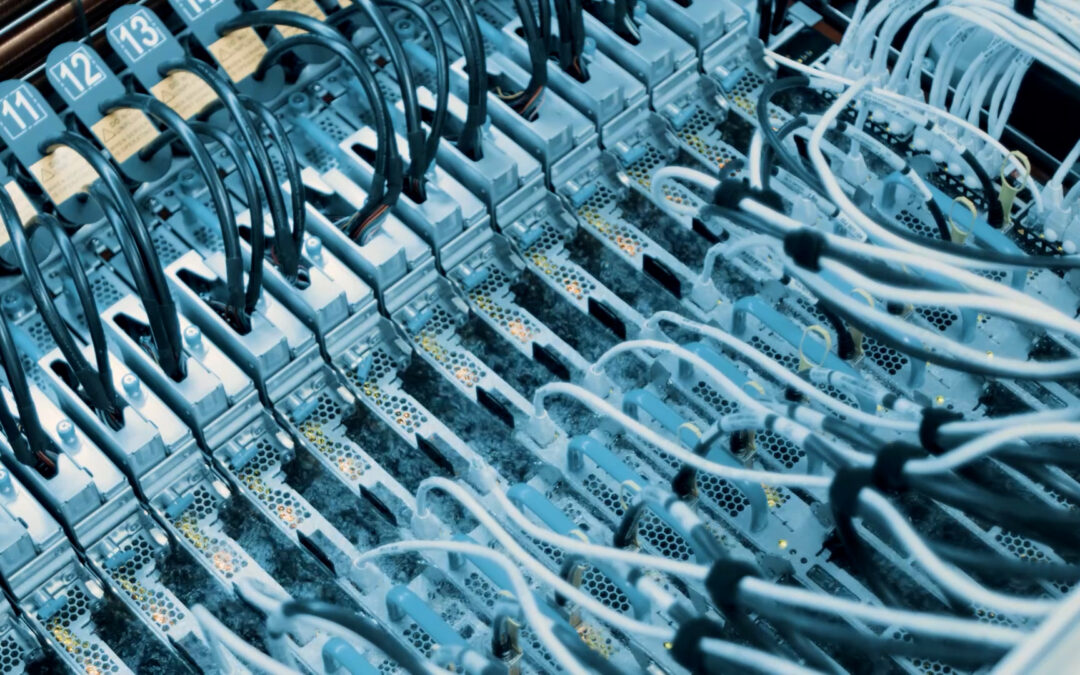Exploring Immersion Cooling – Part 1: The Advantages18 min read

Immersion cooling has attracted an abundance of press coverage in recent years, particularly two-phase immersion cooling. Some have gone as far as to predict that the technology will largely take over data center cooling.
According to Straits Research: “The two-phase immersion cooling system segment … is estimated to grow at a CAGR of 26.7% during the forecast period [2022 to 2030]. It is expected to register a CAGR of 31.1% during the forecasted period.”
In the first part of this two-part series, we review the basics of immersion cooling and go into the potential benefits of single-phase and two-phase immersion cooling. In part two, we lay out the various difficulties immersion cooling is facing, especially two-phase immersion cooling.
Single- vs Two-Phase Immersion
Single-phase immersion cooling utilizes a dielectric liquid that cools server parts through direct contact. The fluid remains in a liquid state. As its temperature rises, pumps circulate it to a heat exchanger where it is cooled.
In two-phase immersion cooling, the dielectric fluid boils when it is in direct contact with a hot server. This turns it into a vapor that condenses on a heat exchanger or condenser and is returned to a liquid state.
“A two-phase immersion system uses latent heat removal capacity and a single-phase immersion system does not,” said Joe Capes, CEO, LiquidStack. “The liquid is an electric insulator that delivers superior heat removal capabilities over air cooling. Immersion cooling eliminates the need for server fans and mechanical air cooling.”
The advantages of immersion cooling include its heat dissipation capacity, its potential to reduce data center footprint and OPEX, its ability to lower Power Usage Effectiveness (PUE), and how it can catalyze AI growth.
Immersion Can Cope with High Chip Wattage
Chips with a Total Dissipated Power (TDP) above 270 watts are difficult to cool with air alone. Given that TDPs are projected to eclipse 1,000 watts by 2025, liquid cooling is gaining traction in modern highly dense racks that serve AI and HPC applications. As more and more GPUs are being added to servers, rack densities are being pushed steadily higher. Thus, some believe immersion cooling becomes unavoidable for some data centers. Two-phase immersion cooling is said to remove 98% of the heat load from IT equipment.
Smaller Data Centers
Some say that immersion tanks may take up more space than normal racks and so data centers will need to be much bigger. However, due to higher cooling potential and less need for air handling units and other cooling equipment, data centers embracing immersion cooling may turn out to be smaller than air-cooled facilities. One study by Page Southerland Page found immersion cooling would result in a 61% reduction in data center building size and up to 32% less land use.
Better PUE and OPEX
PUE has influenced data center decisions for close to two decades. Immersion cooling’s PUE is hard to beat. The partial PUE of a two-phase immersion cooling system is 1.02 to 1.04 nominal and 1.05 to 1.10 for a single-phase system. This is well above the PUE ratings of even the best air-cooled data centers.
The Page Southerland Page study found that two-phase immersion cooling requires 2% or so of a data center’s total energy use, consumes little to no water, and so is cheaper when it comes to OPEX. The same case study reports potential savings of $3.5 million per MW for a two-phase immersion cooled data center over a 36 MW air-cooled hyperscale data center. These savings are due to a smaller footprint, elimination or reduction of redundant air cooling and power infrastructure, fewer building materials and construction costs, and reduced water and energy consumption. In terms of energy use alone, the case study showed that a two-phase immersion cooled data center saved more than 7,900 MWh per year compared with an air-cooled data center.
“Traditional air-cooling doesn’t scale well in prefabricated data centers and has much lower thermal conductivity than liquid,” said Capes.
He noted, though, that this technology has gained ground mainly at the hyperscale data center level space. It was transitioning into wider adoption due to AI and other demanding workloads, but problems related to two-phase fluids have inhibited its progress as will be covered in more detail in part two.
Coping with Generative AI
The latest data center, GPU, and system designs to facilitate generative AI call for a change of approach to power and cooling. The NVIDIA DGX BasePOD, for example, is an optimized data center rack for AI. It contains up to nine DGX-1 servers or three DGX-2 servers at 35 kW. This will increase energy use beyond the limits of traditional data center design.
AI requirements, then, could tip the balance when people contemplate beefing up their air-cooling system compared to taking the plunge into liquid cooling. More heat removal efficiency is needed. Immersion cooling could fit the bill.
“We are entering entirely new territory in the world of data centers, where the levels of compute and power running through these systems are unprecedented,” said S. Jay Lawrence, CEO, Equus, Equus Compute Solutions (Equus) immersion-ready servers. “Implementing sustainable and efficient cooling methods has never been as important as it is now.”
Immersion Cooling in the Real World
NTT Global Data Centers is one example of a company that has deployed immersion cooling. Its Navi Mumbai campus includes a 4.8 MW data center that uses Liquid Immersion Cooling (LIC) and Direct Contact Liquid Cooling (DCLC). The company believes this approach works out up to 30% more energy efficient than conventional cooling systems across a 13,740 square foot facility.
In part two, we discuss the factors inhibiting broad adoption of two-phase immersion cooling such as fluid toxicity, rust, maintenance difficulties, and more.
*Image by Microsoft
Real-time monitoring, data-driven optimization.
Immersive software, innovative sensors and expert thermal services to monitor,
manage, and maximize the power and cooling infrastructure for critical
data center environments.
Real-time monitoring, data-driven optimization.
Immersive software, innovative sensors and expert thermal services to monitor, manage, and maximize the power and cooling infrastructure for critical data center environments.

Drew Robb
Writing and Editing Consultant and Contractor

0 Comments